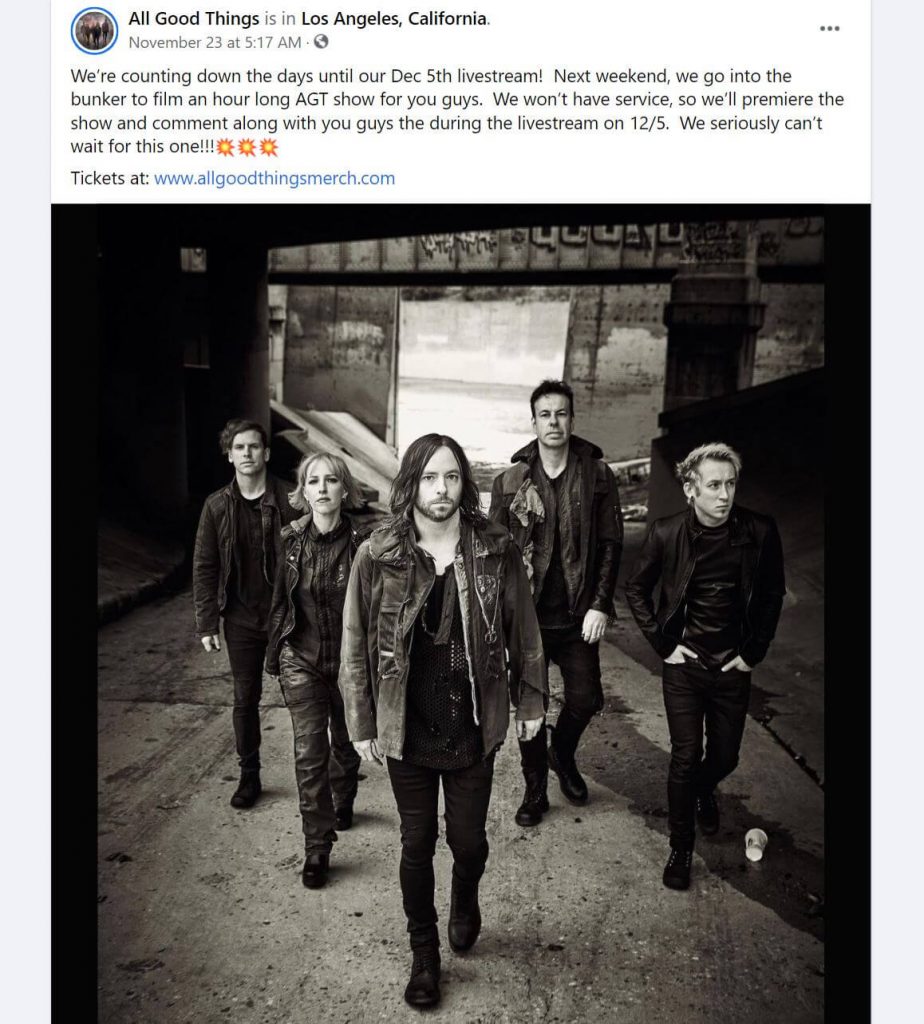Written by StreamYard
How to Develop A Live Streaming Strategy
Live video streams are redefining brand communication. By facilitating real-time audience interaction, they build a more profound trust in your brand that's irreplaceable by any other form of content.
And with the global video streaming market size expected to reach USD 184.2 billion by 2027, its popularity is evident.
But as live streaming viewers belong to all the levels of the sales funnel, brands must tap into all possible avenues of live streaming to attract and convert them into customers.
The question remains: How?
By creating a well-planned live video strategy.
So, how do you develop a live streaming strategy, and why does it matter? Let's find out.
What is a Live Streaming Strategy?
A key element of your digital marketing strategy, live streaming strategy defines how to create, distribute, and promote your live content to achieve your video marketing goals.
Live streaming isn't just about going live on a consistent basis. You need to develop a live streaming strategy to help achieve your video marketing goals, while using live video to deepen relationships with viewers to get them to tune in.
As with most of your online marketing planning components, the live streaming strategy revolves around your "viewers". While your business objectives influence your live video strategy, you need to leave enough room for flexibility. That's because being able to tweak this strategy according to your audience's interests and reactions is the cornerstone of its success.
How to Develop a Live Streaming Strategy?
Most of your viewers seek live content. They want to get up and close with your brand through more real, more here-and-now communication.
So, let's dive into how to develop an impressive live streaming strategy that helps you take your live video content far and wide.
Begin with the end in mind when you create a live streaming strategy
A live-video audience is different from a video-on-demand audience. Therefore, before hitting that "go live" button on your chosen platform, analyze your audience's interests and your brand's goals.
What is it that you want to achieve by going live?
Is it to earn more subscribers or to increase your sign-up requests?
What makes your audience?
Do they prefer watching streams while multi-tasking or are they keen on interacting with your brand?
Preparing for the basics by keeping the end in mind can help you develop a live streaming strategy that is well-thought-out. One that resonates with your audience and is in sync with your goals. That's a win-win.
Plan your content
Remember going live takes effort. So, unless your live video delivers value to the viewers, they may not tune into it. Offer unique content and ensure that it identifies with your brand. Explore your previous videos or other forms of content, including blogs, articles, images, etc., to find the content that has garnered a lot of attention. Doing that will help you discover what your audience might prefer to learn more about when you are developing a live streaming strategy.
Another useful tactic is to look at industry trends. Take advantage of data-driven insights to understand what's hot in your niche and create live content around it. It's a great way to give a boost to your viewership.
YouTube shares some creative live stream approaches that can help engage your audience better. Use one or more of these approaches to make your live streaming content compelling:

Source: YouTube
Decide on the format
Depending on your live video goals, select the type of format.
Usually, live video content can revolve around:
- Event – Webinars, conferences, annual meetings, board meetings, etc.
- Company – Important announcements, behind-the-scenes peeks, etc.
- Product/Service – Product or service launches, product demonstrations, updates, how-to instructional videos, etc.
- User/Customer – User-generated content, case studies or testimonials featuring customers, support videos, question-and-answer sessions, etc.
Choose your live streaming platform
Once you've understood your audience and the type of content your potential viewers would like to see, the next step is to select a platform. While there are several live streaming platforms, each one comes with its pros and cons.
For instance, LinkedIn Live may be a good fit if you are a professional who's keen on capitalizing on the social platform's networking capabilities by going live.
But, if you are into the fashion industry, your audience might be more active on Instagram. In which case, you must tap into Instagram Stories.
Check out how famous Italian fashion blogger Chiara Ferragni often uses Instagram stories to harness the power of live streaming.

Pro Tip: If you want to live stream on more than one platform simultaneously, then StreamYard is your best bet. Plus, you don't need to download any software to use our fantastic live video production tool. All you need is good internet connectivity and a browser. It's a cinch. Really.
Focus on the production value
There's a slight learning curve to live video production, which necessitates the right tools to get started. Even though you can live stream from anywhere you want, focusing on your production value is a must if you wish to engage your audience with fabulous broadcasts.
So apart from good internet connectivity, you need to ensure adequate lighting and sound for a professional quality video stream.
Consider investing in a decent live-streaming camera if you are on a budget and a lapel mic to get things rolling, such as the Canon M50 or Sony Alpha a6100. Gradually, you can upgrade to create a high-end live streaming studio as you master the task.
Collaborate
Collaboration has become a common practice in the live streaming industry, and for a good reason. It helps you gain traction and grow your brand by generating high levels of audience engagement.
Put collaboration into action by inviting industry experts or influencers to be a part of your live videos and expand your reach beyond your existing subs.
Schedule the live stream
You may wish to go live as and when you want. However, scheduling your live stream is as crucial as any other part of your live streaming strategy. That's because most of your audience is active on your chosen platform at a specific time. If you are not there at that point in time, you will lose a significant chunk of viewership.
Depending on your brand's video marketing goals, identify the optimum day(s) and time for live video streaming. And while you are at it, don't forget to consider the time zones. For example, TubeBuddy provides a way to determine the best times to post your live streams on YouTube Live.
Keep in mind that you also need to have a broadcasting schedule in place. Note that most of the live viewers love consistency. If you go live on the same day every week and at a given time, your audience will get into the habit of tuning into the platform at the same time. That's an excellent way to increase your audience by building credibility.
And when you plan for your live strategy schedule, run over this article on How Often Should You Live Stream.
Promote
If you are going live, you need to get the word out. Inform your viewers when are you going live and what can they expect from the broadcast. Giving your potential viewers a heads up will increase the chances of them showing up during the broadcast.
Here are some ways you can promote your live video:
- Adding a promo to your channel
- Posting a teaser video
- Creating a hashtag
- Sending an email blast
- Compelling posts mentioning all the details
Take a look at how the popular music band All Good Things promotes its live streams on Facebook by staggering enough details to intrigue its audience.

Interact
Involve them to engage them.
Don't forget to respond to your audience's comments during and after the stream to keep them interested in your broadcasts.
You can even ask viewers beforehand to attend your live video as you will be answering their queries then and there. A few shout outs will not hurt either.
In fact, most of the live video viewers tune into broadcasts to interact with their favorite brands and personalities in real-time. By telling them that you care enough to respond to their questions, you promote your brand right and direct to those who matter.
And it's hard to beat that kind of self-promotion.
Repurpose
Contrary to popular belief, live video content can live forever. When you develop a live streaming strategy, be sure you include steps to save your videos for repurposing after the broadcast is over.
Once it's saved, you can then use it on multiple platforms to keep the energy going. Some of the ways to repurpose your live streams include:
- Embedding them into landing pages to convert them into lead magnets
- Clipping them and sharing on other social media platforms
- Recapturing the essence of your live broadcasts with blog posts, white papers, and multimedia presentations
- Converting them into podcasts
Measure the impact
Best practice says that measuring your live streams' success is the most important step of them all. As you work to develop a live streaming strategy, don't overlook your analytics. Use the data collected to figure out what's working and what's not.
From analyzing total views to audience engagement (likes, shares, and comments), you can review various metrics to measure your live streams' impact and continue to improve it with each new broadcast.
Ready to leverage your live streaming strategy?
Live videos are exciting. Well, most of them are. But the success of your live streams depends solely on knowing how to develop a live streaming strategy.
According to Google, the global watch time for live content is up 250% year over year. So, put some time and effort into it and let your live broadcasts reach a much broader audience.
Live stream simultaneously on all your preferred platforms with StreamYard and keep your brand alive with live.
